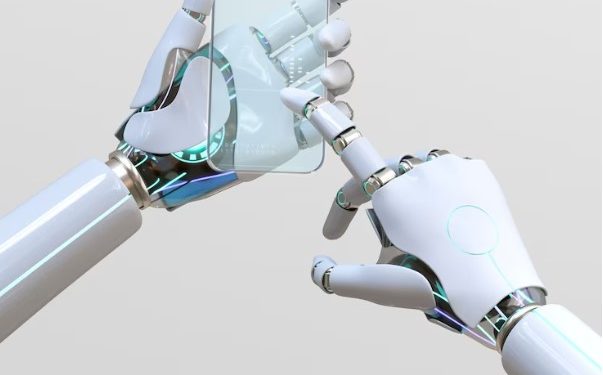Robotics is the branch of technology that deals with the creation of robots, and in manufacturing, applied science has revolutionized factories. Robotics in manufacturing has been around for quite some time now, with gradual advancements leading to the development of modern-day robots capable of performing various tasks with high precision and accuracy.
In the early 1960s, industrial robots were introduced to make manufacturing processes more efficient and faster. With their increasing capabilities over the years, it’s now difficult to imagine how manufacturing could have been done without robotics.
Today, the robot has become an indispensable tool in modern manufacturing, able to meet the demands of fast-paced production environments while consistently performing repetitive tasks.
Importance of robotics in modern manufacturing
Robotics has played a pivotal role in modern manufacturing, revolutionizing how we produce goods. The incorporation of automated machines has allowed complex operations, such as assembly and packaging, to be completed quickly and efficiently. This not only saves time and money but also minimizes errors and increases overall quality control.
With the advent of Industry 4.0, technology has become an integral part of manufacturing, and robotics is at the forefront. As artificial intelligence continues to evolve, we can only expect even greater integration of robotics in manufacturing, leading to unprecedented productivity and efficiency.
Advantages of Using Robotics in Manufacturing
The emergence of robotics has revolutionized the manufacturing industry by increasing productivity and efficiency. Robots are designed to work tirelessly and accurately, thereby reducing production time, and minimizing errors and defects. They provide much-needed consistency in production standards with high precision and accuracy in manufacturing processes.
In addition, robots contribute to cost savings through the reduction of labor costs and lower maintenance costs. Most importantly, robotics has enhanced safety and risk management in the manufacturing industry. Work-related injuries have decreased significantly, improving employee morale and job satisfaction. Robotics has positively impacted the manufacturing industry and will continue to shape its future.
Improved employee morale and job satisfaction
As companies continue to embrace technology, increasing automation in the workplace has become necessary. However, it’s not just about saving time and money. Improved employee morale and job satisfaction are just as important. Automating routine and mundane tasks frees employees to focus on more strategic and creative work, allowing them to feel more fulfilled and challenged in their roles.
Additionally, automation can reduce errors, increase efficiency, and improve work-life balance. By investing in automation, companies value their employees’ time and contributions, leading to a more motivated and engaged workforce.
Types of Robotics Used in Manufacturing
The use of robotics in manufacturing has evolved dramatically over the years. With the advent of advanced technology, robotics has become an integral part of many industries. Two main types of robotics are used in manufacturing: industrial robots and collaborative robots. Industrial robots are programmable machines designed for repetition and precision. They can be subdivided into assembly and material-handling robots, each with a specific function.
On the other hand, collaborative robots are designed to work alongside humans, offering several benefits such as increased productivity and safety. They are increasingly used in various manufacturing applications, from material handling to quality control, making them an essential tool for modern manufacturing processes.
Implementation of Robotics in Manufacturing
Implementing robotics in manufacturing has been a game-changer, but it’s essential to consider all factors before jumping in. A cost-benefit analysis is necessary to determine if the investment is worth it in the long run. Training and skills must also be considered to properly operate and maintain robotics systems.
Planning for successful implementation is also crucial, which involves seamlessly identifying processes suitable for robotics and integrating them into existing systems. Once implemented, monitoring and maintenance of the robotics systems are essential for their continued success. With careful consideration and execution, implementing robotics can bring numerous benefits to manufacturing companies.
Challenges in Implementing Robotics in Manufacturing
The integration of robotics in manufacturing presents a myriad of challenges that need to be addressed. The technical aspects alone, such as programming and customization, require a level of expertise and investment that may preclude some businesses from adopting them.
Additionally, integration with existing systems may pose a challenge, particularly for companies with legacy software and equipment. But beyond the technical challenges, ethical and societal concerns are also at play. For instance, job displacement can lead to social and economic upheaval, while safety and security risks can put employees and consumers at risk.
Addressing these challenges will require a coordinated effort between manufacturers, policymakers, and civil society to ensure that the benefits of robotics are realized while minimizing the risks.
Conclusion
As we end our exploration of robotics in manufacturing, it’s essential to reflect on the advantages we’ve discovered. From increased efficiency to improved quality control, robotics has the potential to revolutionize the manufacturing industry. Looking ahead, the future of robotics in manufacturing is bright. Advancements in technology will only make robots more capable and cost-effective.
However, more is needed to recognize the potential benefits of using robotics in manufacturing. It’s time for manufacturers to take action and start implementing these solutions in their own facilities. By embracing the latest technology, manufacturers can stay ahead while improving their bottom line. The choice is clear – now it’s up to you to take the first step.














